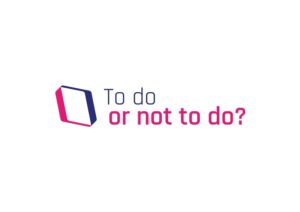Background information
Reducing low-value care (LVC) is a persistent challenge. LVC provides no benefit to patients, but does
provide risk of harm and wastes resources. Reducing LVC has proven to be difficult and knowledge
about it is scarce.
Aim and relevance of the initiative
To do or not to do? is a Dutch national program that helps physicians, nurses and patients in making a
well-informed and shared decision whether a specific health care practice is the right choice for this
specific patient. The program supports projects in which healthcare professionals reduce LVC, and
aims to scale up successful de-implementation interventions.
Patient description and involvement
Relevant patient information is crucial for effective de-implementation of LVC. In most projects
patients receive specific information in order to make the right decision together with their doctor.
Methods, size & scope
The program started in 2015 with identifying LVC and generating knowledge about deimplementation.
‘Do-not-do lists’ were made for nursing, specialty, and general practice care. We
reviewed literature to gain insight into the potential barriers and facilitators for reducing LVC, and
the degree to which existing interventions are effective. Furthermore, the program launched eight
multicentre projects, aiming to reduce LVC. In 2019 we started with dissemination of knowledge and
enlarging the community with 15 new de-implementation projects. We are currently working on
generating knowledge about the process of dissemination and scaling up the effective
deimplementation interventions nationwide.
Results
Knowledge on de-implementation
Evidence or a lack of it, and a consensus amongst clinicians, were the most frequently observed
factors facilitating or barring de-implementation. Patients’ knowledge of the potential harm, lack of
benefit, and cost of low-value care, facilitated its reduction.
De-implementation projects
Five of the eight projects successfully reduced LVC through their de-implementation strategy;
1. A 26% reduction in the percentage of patients with an inappropriate urinary catheter and a
35% reduction in the percentage of patients with an inappropriate intravenous catheter.
2. A 23% and 20% reduction in the number of vitamin D and B12 tests by the general
practitioner.
3. A 11% reduction in the number of laboratory diagnostics per patient contact on the internal
medicine ward of hopitals.
4. A 13% reduction in the number of patient visits after treatment for low-risk basal cell
carcinioma.
5. 61% of patients with dyspepsia did not choose un upper gastrointestinal endoscopy after
following an e-learning.
We observed no negative consequences of the strategies on patients and the use of other care.
Materials and tools
We produced many materials to support healthcare professionals and patients in de-implementing
low value care. You can find them here. https://todoornottodo.nl/aan-de-slag/
Partnerships
The programme is supported by a steering committee which consists of all key players; including
clinicians, patients, providers, insurers, and government.
In all projects, the emphasis is on cooperation between healthcare professionals and patients.
In the scale-up, we partner with professional associations such as the Dutch College of General
Practitioners, organisations for patient information (www.thuisarts.nl), organisations for education
(https://e-infuse.com) and of course hundreds of patients and healthcare professionals.

